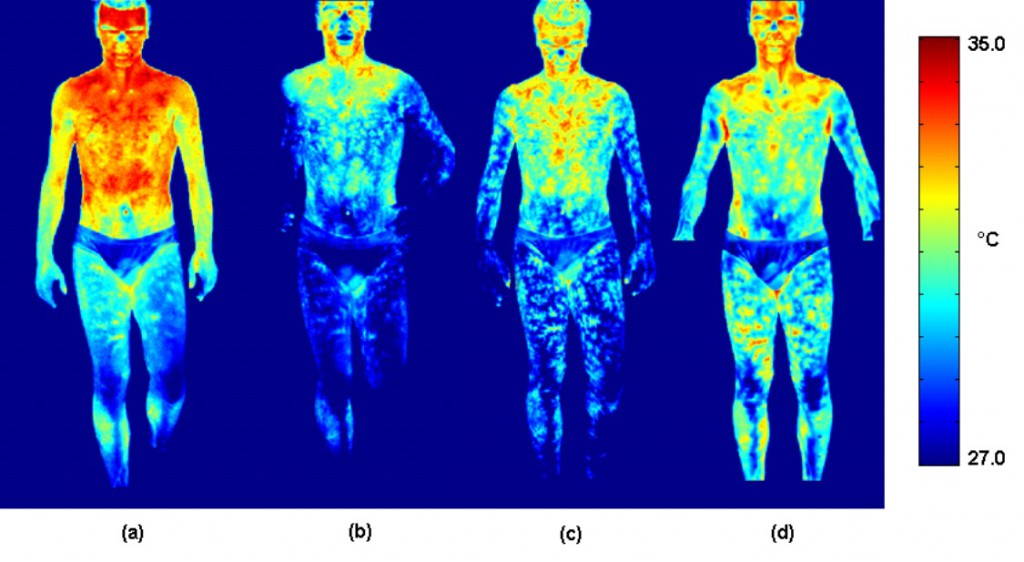Infrared Imaging
THE TECHNIQUE
Infrared Imaging (IR) is a technique that permits the measurements of the thermal infrared emission of the human body. By means of specific detectors sensitive to the wavelength of such radiation, it is possible to non-invasively map and evaluate the temperature distribution of bodies to detect abnormalities or impaired functions.
Medical infrared imaging (also known as medical thermography) started back to 70’. The results were modest, probably because of low performances of the devices available. Over the very last years, an impressive development of a new generation of digital and computerised infrared cameras has open new possibilities and applications which are based on the dynamic and real-time recording of the time-evolution of the temperature distribution, thus making possible a functional approach to the study of the human body temperature and its control (functional infrared (fIR) imaging).
Thermal infrared imaging: the false-colours scheme displays the modification
of the skin temperature distribution during an athletic exercise.
FACILITIES
- Thermal IR Camera FLIR SC3000, 320x200, QWIP, NETD: 20 mK @ 30°C
- Thermal IR Camera FLIR SC660, 640x480, Microbolometer, NETD: 30 mK @ 30°C
- Thermal IR Camera FLIR A655sc, 640x480, Microbolometer, NETD: 30 mK @ 30°C (one used for teaching and training)
Additional Equipment
- Full PowerLab ADInstruments System
- Wireless Detectors for Psychophysics
- Computers for triggered stimulation
- Software for preparing and administering the stimuli





